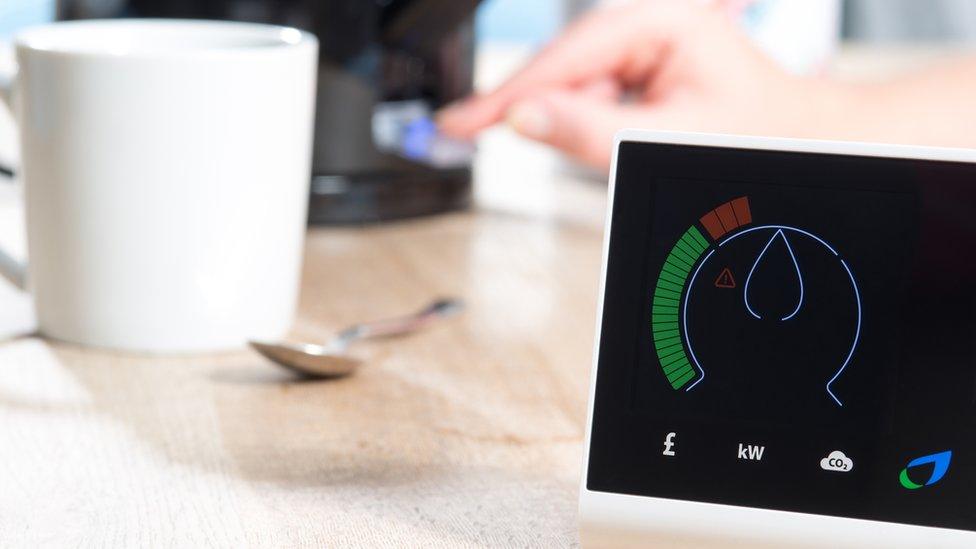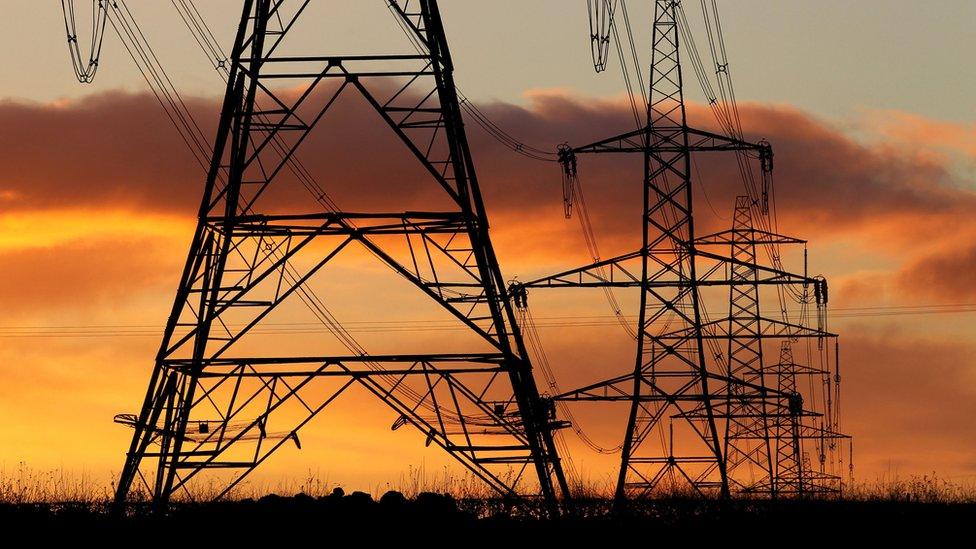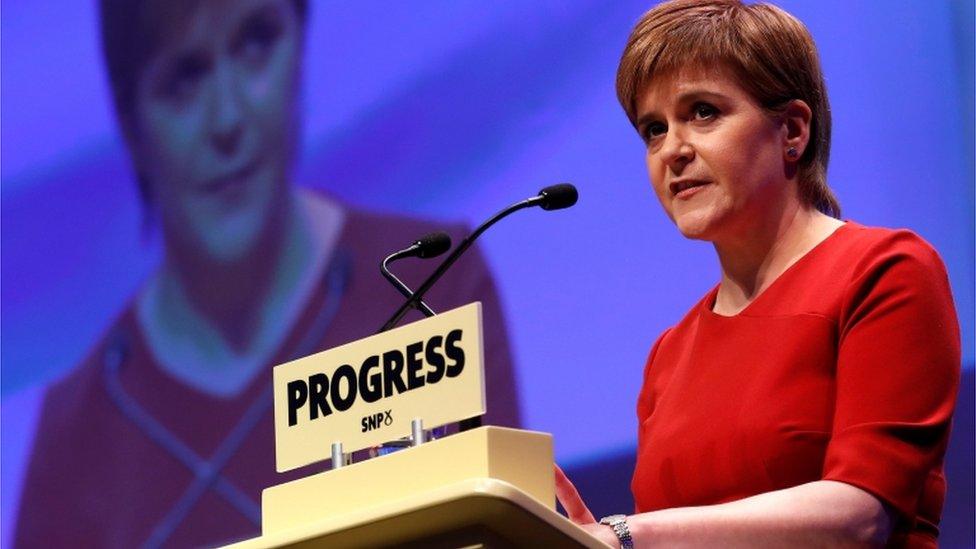ScotEnergyCo: Turning up the thermo-state
- Published

A new tax year brings divergence for Scottish income tax from the Westminster bands and rates. It also brings a sugar tax. For those receiving the state pension, it brings a 3% increase, based on the rate of inflation last autumn.
But for many, what matters about the new financial year is what it doesn't bring. On the major working-age benefits, it fails to bring an inflation-linked increase. This is the third year out of four that the freeze is planned.
Quietly, and with little protest, it is a welfare cut that is saving the UK government billions of pounds. Those with the tightest household budgets are finding they have to stretch them more each year.
And with inflation up in the past year, and reaching that 3% rate from which pensioners gain, it is one causing widespread pain.
According to the Institute of Fiscal Studies, the four-year freeze is now expected to save the government £4.5bn, with 11 million households affected, and losing on average £400 per year.
That is one of the 2015 raft of working-age welfare cuts being introduced year by year, including cutbacks in the amount claimable under family tax credits, and with many of the cuts yet to bite. For some, the bite arrives with the roll-out of Universal Credit.
Big ambition
The Scottish government says it wants to mitigate that, and can do so at least at the margins, with the welfare powers being devolved to it. A recent Audit Scotland report was a useful reminder of how complex that process is, and brought a worrying revelation about the lack of costing.
So what else can Nicola Sturgeon's administration do? Well, it could address a challenge that afflicts Scots more than those to the south, of fuel poverty.

Around 2014, that was a hotter topic. High energy prices put more than a third of Scottish households into fuel poverty. With prices lower and falling use of energy, that is now close to quarter.
However, the first minister pledged last autumn, at her party conference speech, that the Scottish government will set up a supplier of household energy.
Widely applauded at the time, it was a big ambition. Or at least, making it work is a big ambition, with the risk that expectations run ahead of the possible.
Some of the reality has now caught up. EY, formerly Ernst & Young consultancy, has been working with the Scottish government on a study of how the energy company might work.
Located in one of the more obscure crannies of St Andrew's House's website, it lays out some interesting options.
White label
One is to create an energy provider as a national venture which then splits into different brands which can then be branded to appeal to different council areas. This would be done through joint working with councils, leaving local authorities to decide if they want to take part or not.
It would be a sign the Scottish government may not be deaf to criticism that it has been over-centralising.
Whether branded nationally, or locally, the big choice is whether the Scottish government wants to go it alone - setting up a new company which would require an energy suppliers' licence, taking the risk of losses as well as the profit from doing so.
The cost of doing that - based on companies that have gone before it - is estimated at set-up to be as much as £3.5m, with first year costs up to £9m.
The alternative is to go for a "white label". Get an existing provider to provide the licence and the service, taking the risk on where and when to buy energy. Then, badge it as a Scottish government project, with a brand or brands that might have more trust than others in the market.
The second of these options looks a lot more attractive, in keeping cost and risk down. However, it may fall short of expectations that an independent state-owned company can strip out profit from the wholesale market, where others have failed to do so. It would also remove the possibility that the Scottish government could set its own prices.
Switchers
Those high expectations have been built up through public misunderstanding of the energy market. What they perceive are the dominant Big Six, two of them based in Scotland - SSE and ScottishPower. The perception is also that prices rocket up with wholesale costs, but come down like a feather.
The market is intensely scrutinised by the regulator, Ofgem. And claims that the market has failed to act in the interests of customers have been hard to make stick.

When the Competition and Markets Authority looked into it, it found the market is not functioning properly, but not because of the Big Six. It found the problem is a lack of consumer engagement, the high costs for challengers to come into the market, and regulation which has been too slow to benefit customers as it should.
In other words, it's primarily the customers' fault. Government and regulator continue their struggle to find effective methods of improving customer engagement and encouraging switching.
Ofgem has been toughening requirements on the way companies treat customers and made it easier for others to get into the market.
Customer service
The result, according to this new EY report, is that there are no fewer than 42 providers for Scottish customers. That's a lot of competition.
They're competing primarily on price, seeking out innovative ways of cutting the cost of handling billing and customer service.
Several new, small providers have found it difficult to meet Ofgem requirements of responsiveness. One of them, Iresa, was recently barred from taking on any new customers until it has sorted out its customer service nightmare.
A couple of these smaller companies have gone under. The margins are very tight, and the cost of winning new customers is high, while so many people are reluctant to switch.
The EY report points out that half the companies reported a loss in their most recent accounts, including two of the Big Six.
Newcomers to energy supply are finding that there are big costs of getting the right billing software in place. That requires not just big investment, but also the capacity to understand how best to use it. The record of UK and Scottish governments at introducing complex new IT is not good.
As EY concludes: "It is possible to establish an Energy Co to achieve the stated objective of delivering competitively priced energy to help alleviate fuel poverty in Scotland.
"We recognise, however, the challenges of doing this in a highly innovative, competitive and evolving energy retail market."
That's worth emphasising. Getting into this market means aiming at a moving target.
Competitive
Could the Scottish government or local authorities use their brand awareness to cut through these challenges - to persuade people that they can offer a more trustworthy, price-competitive, socially-responsible service?
That is the scenario that EY hints strongly is most compelling, or least problematic - being price competitive, but focussing its appeal more on tackling fuel poverty. That would, for instance, include help to householders to reduce their energy use.

But remember: one of the main ways of driving down cost to boost competitiveness is in pushing customers into online-only accounts. That's when many in fuel poverty don't have ready access to the internet.
However, under European rules (for now), it would have to be devised without subsidy. Expect rival companies to watch closely and to ensure there aren't hidden taxpayer subsidies - in advertising and marketing.
Without subsidy, EY goes on: "the over-riding strategic question for the Scottish government is how to make the Energy Co cost competitive, in a low margin market."
It points to a more ambitious set of options, if the Scottish government wants to use its Energy Co as a vehicle for economic development. The idea seems to be that this could be the vehicle for getting improved investment in micro-renewables and perhaps district heating systems. The councils in Aberdeen and Edinburgh are already going down that road.
Crowded
There's more than just a political pledge at stake here. Behind it is a belief that the state can and should intervene in the market.
That's why the Scottish government is planning its Scottish National Investment Bank. Ministers also want to prepare a public sector bid to replace Abellio (the Dutch government-owned rail company) when the ScotRail franchise next comes up.
They run west coast ferries and want to keep it that way. Highland airports are state-owned. So is Prestwick, in an expensive, open-ended attempt to get it back into profitable shape.
In a crowded, competitive market for supplying electricity and gas, the Energy Co may find it hard to locate a niche, but it's clear the Scottish government wants to give it a try.
- Published11 October 2017

- Published10 October 2017

- Published10 October 2017
- Published11 October 2017